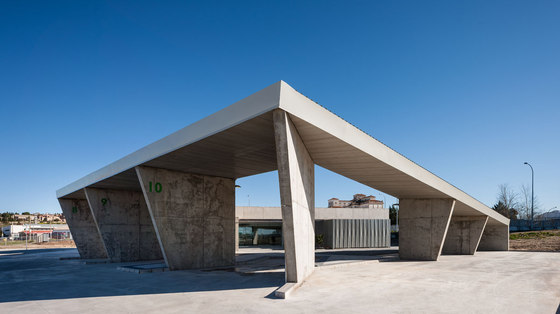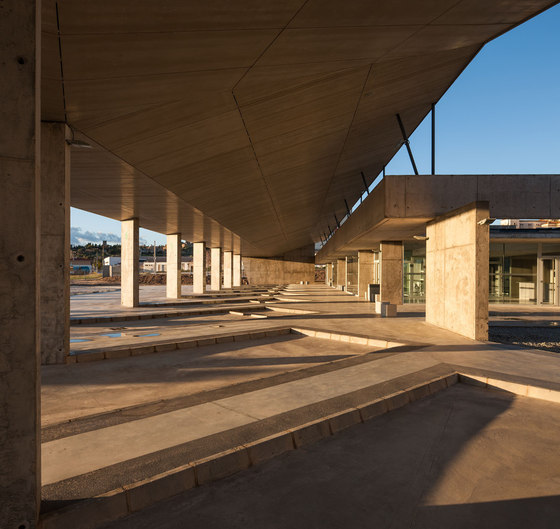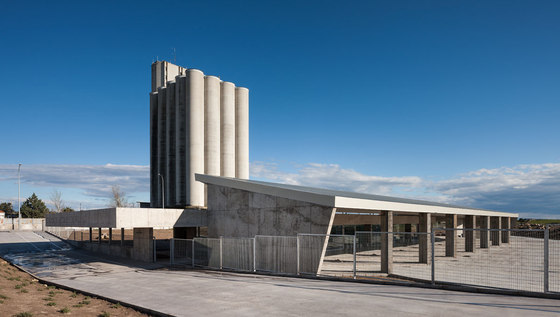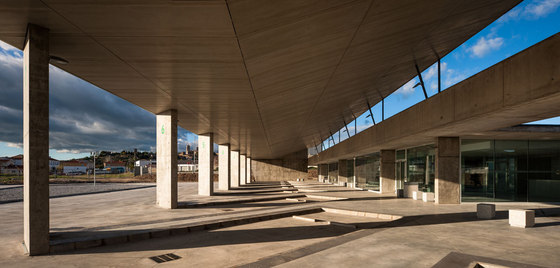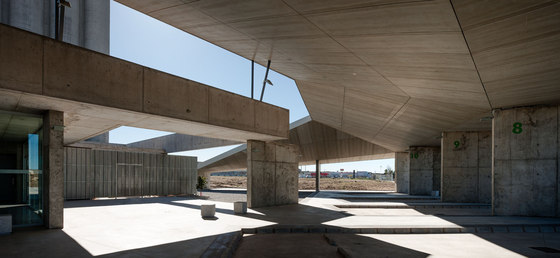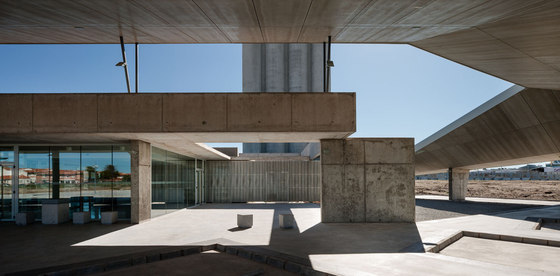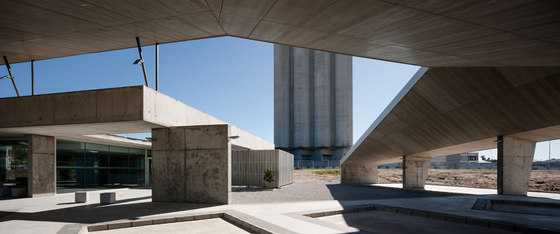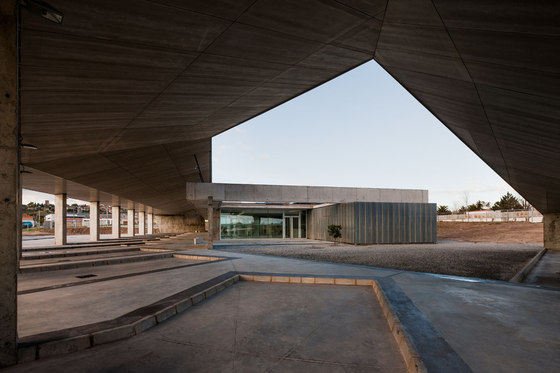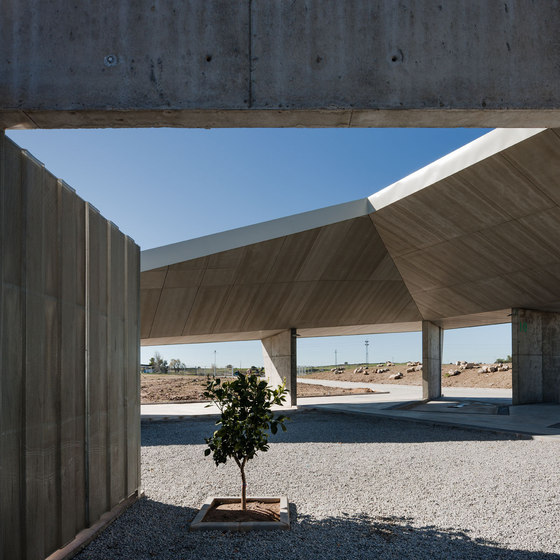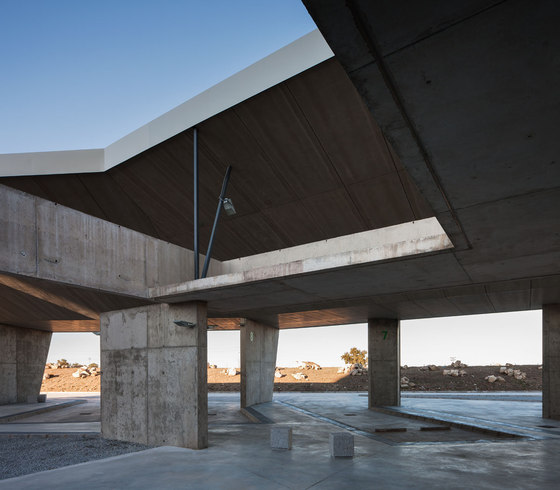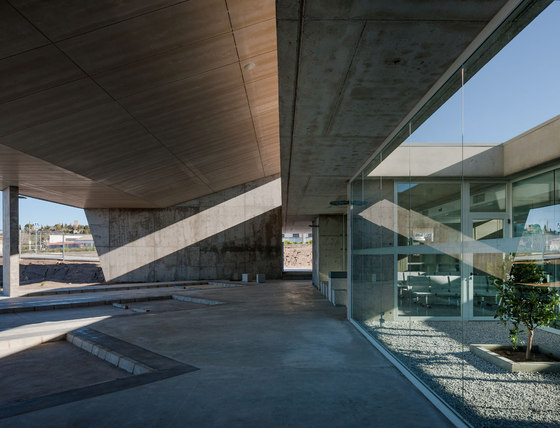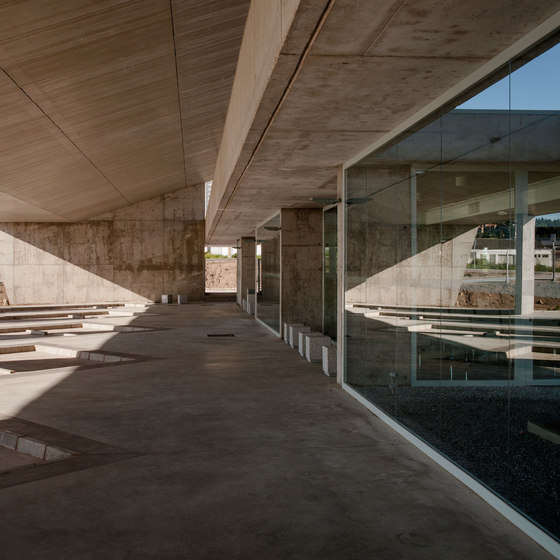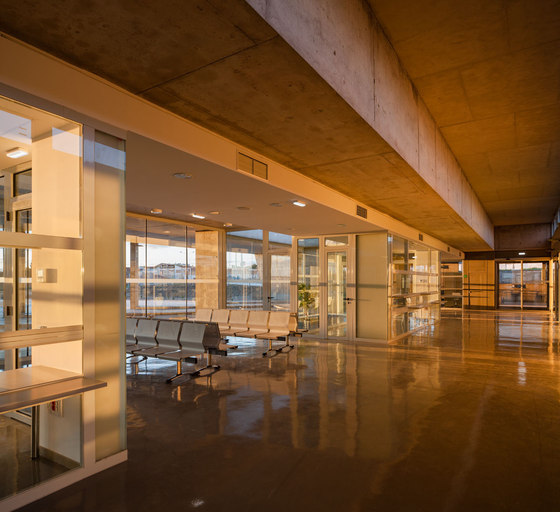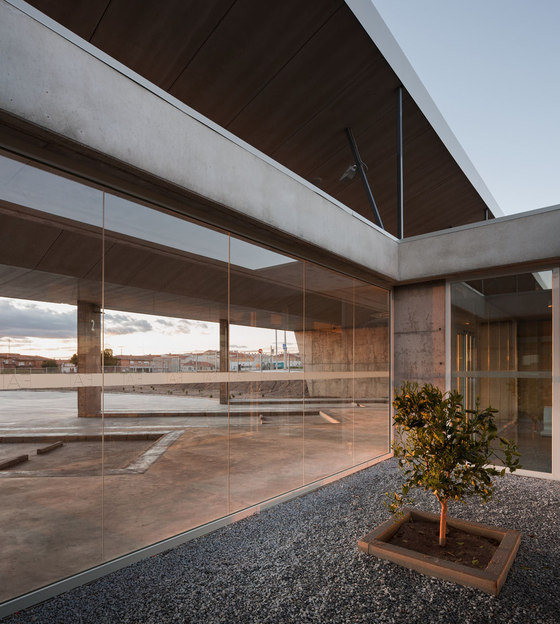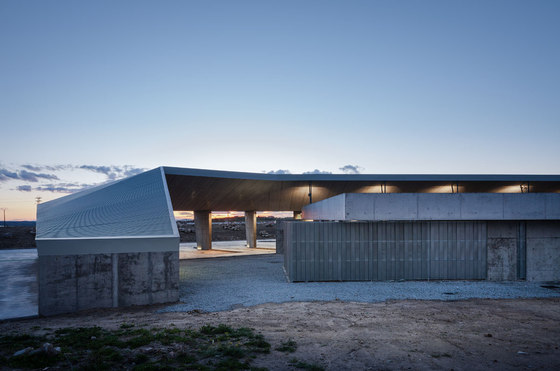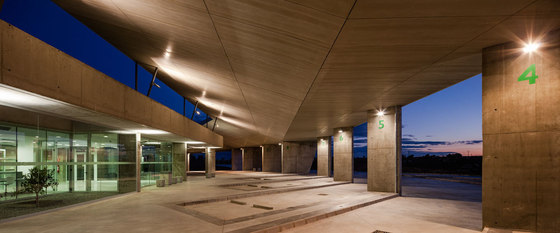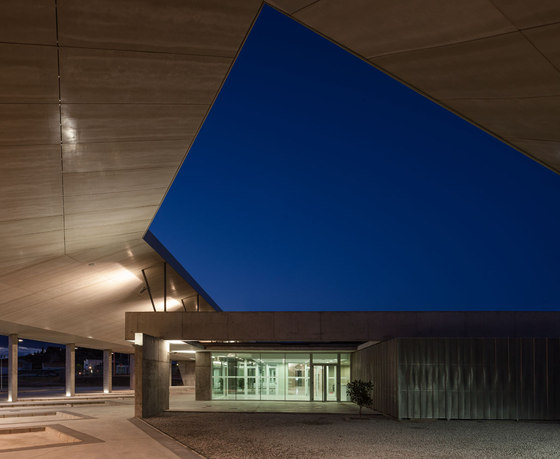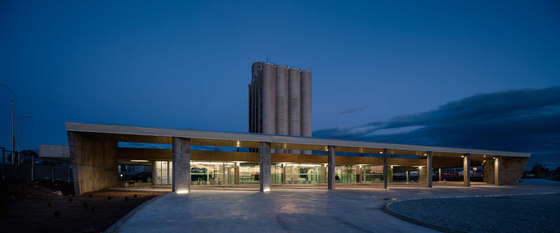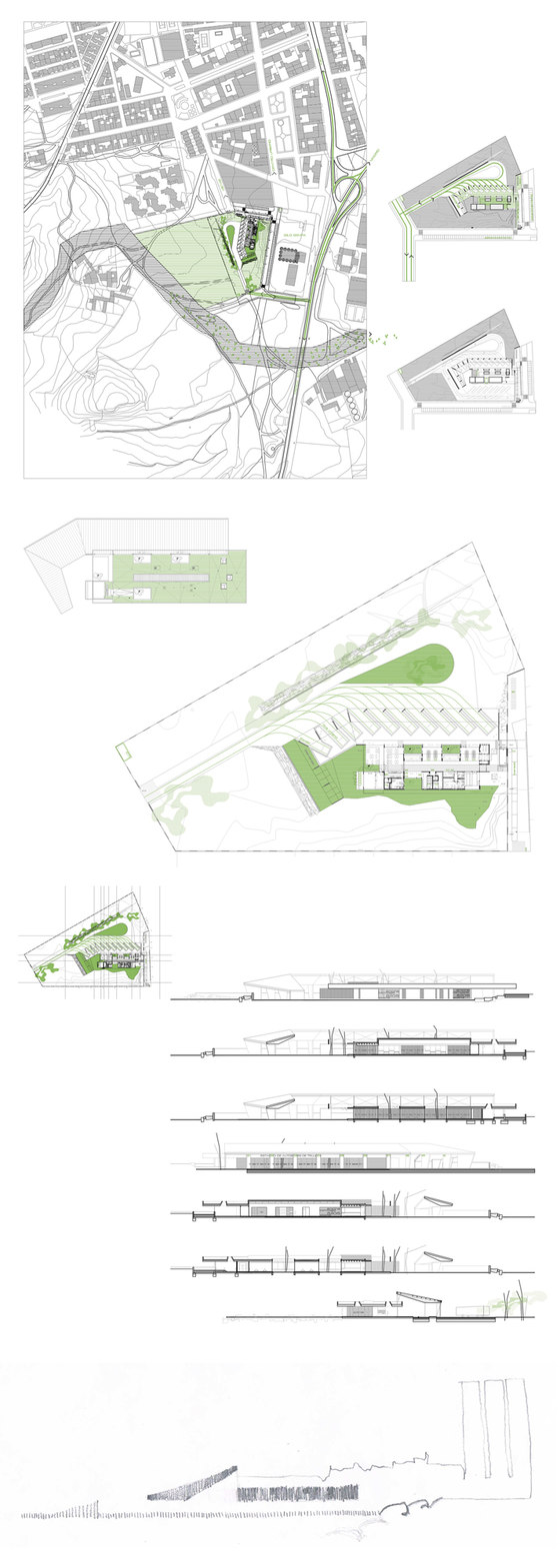When the road is reaching the town, the rocky landscape turns into a skyline of stone carved by man and History. A big animal‐feed silo, with huge concrete pipes looms over this skyline, showing how important is livestock sector where farming is really hard.
The Trujillo Bus Station is located in this border area between countryside and town, where the urban layout has diluted to individuality, an urban plan seeks integration through a cattle track and a large green area. In this field of crags, so exposed to weather, is placed this low rise building, linked to the land, like a big stone where one can be sheltered.
Once inside the site there are two different levels: the vehicles platform and passengers place. Busses get in and out at field level, without ramps, to interfere as little as possible with passengers movements. The pedestrian access is at higher level, closer to the town. A soft game of levels makes the cobbled street get in the site. Then, once sheltered by the big “stone”, people can go inside the Station.
Under the "stone", the sloping structure, gets raised, folded and increases its volume, turning from staff parking to the shelter over the buses parking bays and platforms. Outdoors is the real hall for pedestrians. The robust concrete shelter (the “stone”) is perforated by light: from outside we have some skylights that drive us towards the entrance. From inside they are glassed courtyards, open to the platforms, an only horizontal and visually open, linking indoors and outdoors.
This courtyards, and some translucent ticket office subdivide the place creating a series of waiting rooms, for long‐ or short‐ distance travellers. The cafeteria, like another waiting room, opens directly to the platforms. Culminating the indoor waiting area, there are trees in the south oriented courtyard, which is bigger than previous and generates a sunny area linking indoors and outdoors waiting.
Concrete unifies floors, walls and ceilings, with its monolithic appearance, and defines passengers movements, only interrupted by facilities rooms and inner lining of close rooms. Glasses physically separate areas and close courtyards, creating an effect of transparency and the gloss that we usually find inside a rock.
Area: 2 643,82 m2
Ismo Arquitectura
Architects: Isabel Amores + Modesto García
Collaborator Architect: Isabel González
Structure: M. del Mar Muñoz‐Reja, Alejandro Cabanas Installation: Laura Fernández, Felipe Ramos, Salvador Ruiz
Measuring: Jorge Ayala
